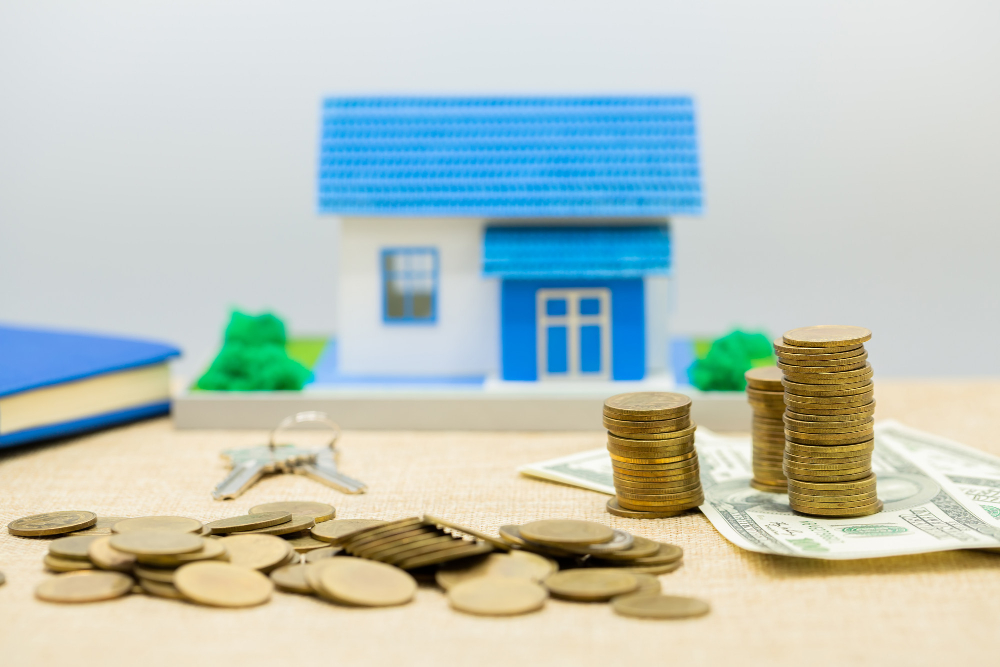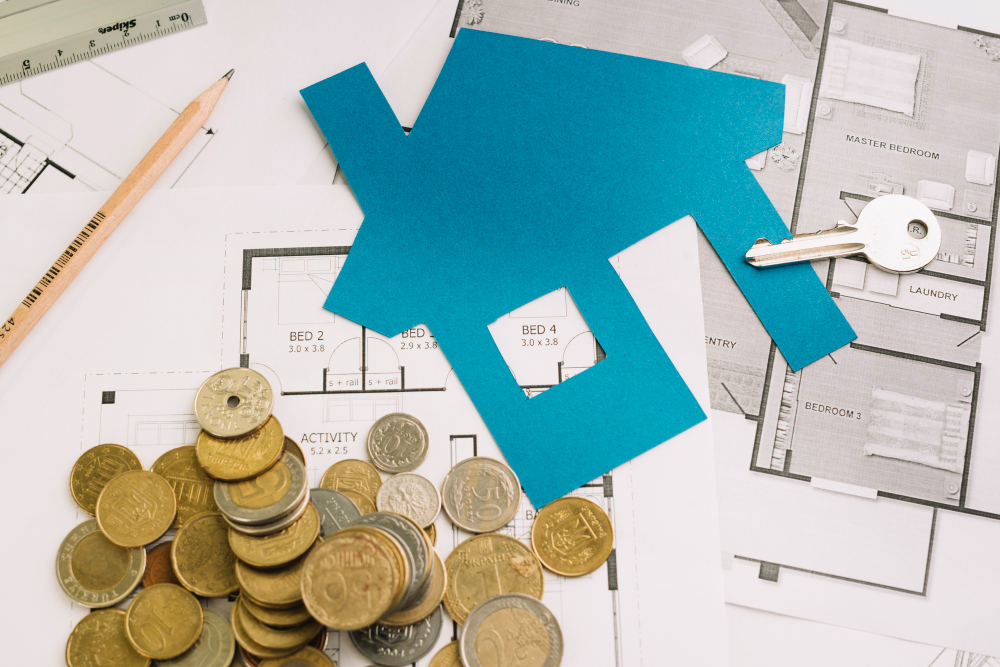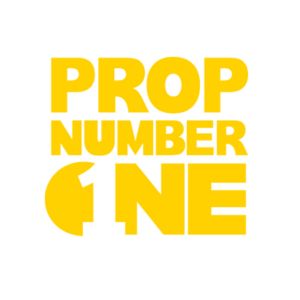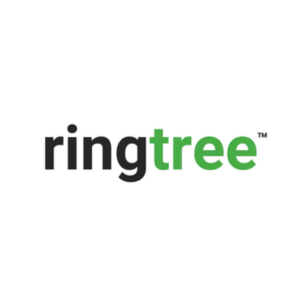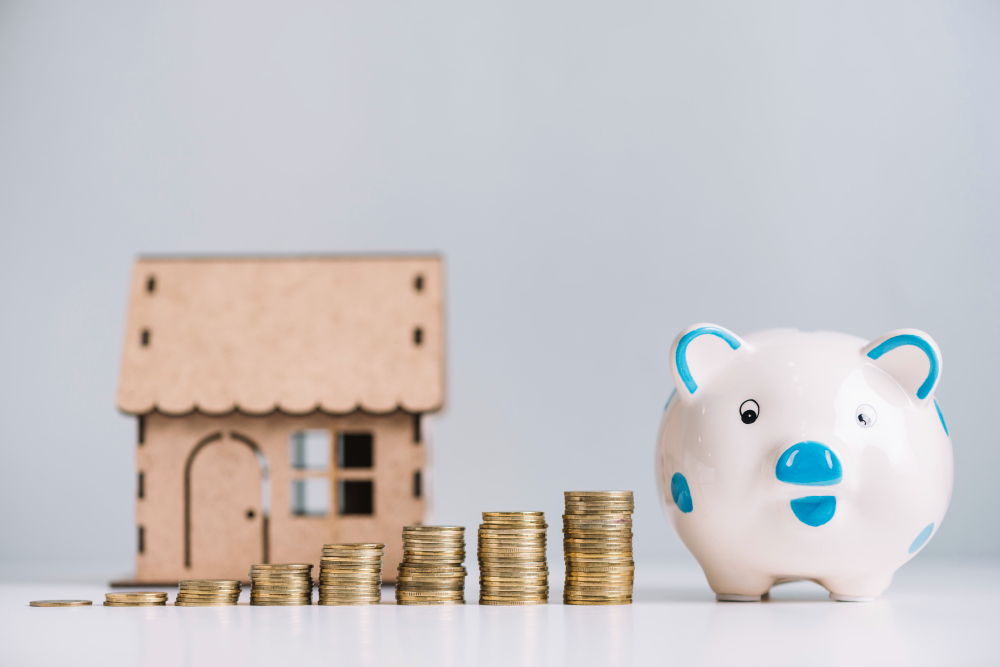
How to Save for a Down Payment on a House While Paying Off Debt
Introduction:
When you're on the journey to homeownership, saving for a down payment is one of the most important financial goals you'll face. However, if you're already carrying debt, you might find yourself caught between two priorities: paying off what you owe and building the savings you need for a home. Striking the right balance between these goals can feel challenging, but with a clear plan and disciplined approach, it’s entirely possible to achieve both.
Understanding the importance of balancing debt repayment and saving for a home.
When you're working toward the goal of saving for a home, it's essential to strike a balance between paying off existing debt and building up the savings needed for a down payment. This balance can be tricky but is crucial for achieving long-term financial stability while preparing for homeownership.
Managing debt and saving for a home both require careful planning and discipline. On one hand, paying off high-interest debt, such as credit card balances or personal loans, should be a priority, as the interest on these debts can quickly outpace any savings growth. On the other hand, saving for a home down payment is equally important because a substantial down payment can lower your mortgage interest rate and reduce monthly payments.
Step 1: Create a Budget That Supports Both Saving and Paying Off Debt
How to establish a budget that allows you to save for a down payment while addressing existing financial obligations.
Creating a budget that accommodates both saving for a home and addressing existing financial obligations is key to reaching your goal of homeownership without sacrificing financial health. The first step is to clearly understand your income, expenses, and debts.
Begin by tracking your monthly income and expenses. Categorize your spending into needs, wants, and savings. Prioritize necessary expenses such as rent, utilities, groceries, and minimum debt payments. This will give you a clear picture of where your money is going each month and help identify areas where you can cut back.
Next, allocate a portion of your income towards paying off high-interest debt and a portion towards saving for your down payment. The exact split will depend on your financial situation, but the goal is to balance reducing debt while building up your savings. Consider using the 50/30/20 rule—50% for needs, 30% for wants, and 20% for savings and debt repayment. Within the savings portion, try to set aside a specific percentage toward your down payment fund.
To make your budget even more effective, automate your savings. Set up an automatic transfer to a dedicated savings account for your down payment each payday. By treating savings as a non-negotiable expense, you'll be less tempted to spend the money elsewhere.
Step 2: Prioritize High-Interest Debt to Free Up More Savings for a Home
Why focusing on high-interest debt can accelerate your journey to saving for a home.
When you're focused on saving for a home, one of the most powerful steps you can take is addressing high-interest debt. High-interest debt, such as credit card balances, payday loans, or certain personal loans, can seriously hinder your ability to save for a down payment. The reason is simple: the higher the interest rate, the more money you’ll be paying towards the debt itself, rather than your savings.
By prioritizing high-interest debt, you can reduce the amount you're losing each month in interest payments. This frees up more of your income, which you can then direct towards building your savings for a home. Additionally, tackling high-interest debt often provides a psychological boost, as you’ll see your balances decrease more quickly, keeping you motivated throughout the process.
Step 3: Set Realistic Saving Goals for Your Down Payment
Tips for setting achievable down payment goals, keeping them in line with your financial capabilities.
Setting a realistic down payment goal is crucial when you're saving for a home while managing debt. A well-planned, achievable goal ensures you stay motivated without overextending yourself financially. Here are some tips to help you set down payment goals that are in line with your financial situation:
Assess Your Finances
Before setting any goals, take a close look at your current financial situation. Calculate your monthly income, expenses, and any debts you're paying off. This will help you determine how much you can realistically allocate towards your down payment while still covering other financial obligations.Set a Timeline That Works for You
While it's important to be ambitious, your down payment timeline should be reasonable. Consider how long it will take you to pay off any remaining high-interest debt and factor that into your savings plan. If you're aiming for a larger down payment, make sure to give yourself enough time to save without putting too much strain on your finances.Break Down Your Goal into Smaller Milestones
Rather than focusing solely on the end goal, break your down payment target into smaller, more manageable milestones. This could mean setting monthly or quarterly savings targets. Achieving these smaller milestones will keep you on track and give you a sense of accomplishment along the way.Consider Various Down Payment Options
Keep in mind that down payments can vary depending on the type of home loan and the lender’s requirements. Some programs offer as little as 3% down, while others may require 20%. Research the different options available to you and choose a down payment amount that aligns with your long-term financial goals and capabilities.Reevaluate Periodically
Life changes, and so should your goals. Regularly reassess your progress and financial situation. If you get a raise or pay off a significant chunk of your debt, consider adjusting your down payment goal accordingly. Staying flexible helps you adapt to any shifts in your financial landscape while still staying focused on saving for a home.
Step 4: Automate Your Savings for a Home
How automating your savings can make the process easier and more consistent.
One of the most effective ways to stay on track with saving for a home while managing debt is by automating your savings. Automating your contributions ensures that you consistently set aside money for your down payment, without having to think about it each month. Here's how automating your savings can simplify the process:
Consistency Without Effort
Automating your savings allows you to establish a set amount to be deducted from your paycheck or checking account each month. This eliminates the need for manual transfers and ensures that you're regularly contributing to your home savings, even on months when other financial priorities might seem more urgent.Helps You Prioritize Your Goal
By automating your savings, you’re making your down payment a non-negotiable part of your budget. Just like paying bills or covering essential expenses, your savings goal becomes a priority. This consistent commitment helps you avoid spending the money elsewhere and keeps you focused on your long-term objective of buying a home.Takes Advantage of the “Out of Sight, Out of Mind” Effect
When money is automatically transferred to a savings account, it’s easier to forget about it, which can actually be a good thing. Not having the money readily available reduces the temptation to spend it on unnecessary purchases, ensuring that your savings grow steadily without distractions.Reduces Stress and Mental Load
Saving for a home while paying off debt can feel overwhelming at times. Automating your savings reduces the mental load of remembering to transfer money or figure out where to cut back. You’ll know that the process is happening in the background, which can make it easier to stick to your goals.Frees Up Time for Other Priorities
Automating savings gives you more mental bandwidth to focus on other aspects of your financial plan, such as paying off high-interest debt or improving your credit score. You can devote your time and energy to debt repayment while still making steady progress toward your down payment goal.
Step 5: Cut Unnecessary Expenses to Boost Savings for a Home
Identifying and eliminating non-essential spending to accelerate your home savings.
When you're focused on saving for a home while paying off debt, every dollar counts. One of the most effective ways to speed up the process is by identifying and cutting out non-essential spending. While it’s important to enjoy life, making mindful decisions about where your money goes can free up significant amounts that can be redirected into your savings. Here’s how you can identify and eliminate unnecessary expenses to accelerate your home savings:
Track Your Spending
Start by tracking all of your monthly expenses. This will give you a clear picture of where your money is going. Use budgeting apps or simply keep a record of each purchase. Once you have a breakdown, you can identify areas where you're spending more than necessary.Evaluate Subscription Services
Many people pay for subscription services they no longer use or need, such as streaming platforms, magazines, or subscription boxes. Review your subscriptions and cancel those that don't add enough value to justify the cost. This could free up money to boost your savings or pay down high-interest debt.Cut Back on Dining Out
Eating out can be a major drain on your budget. While it’s convenient and enjoyable, frequent restaurant meals or takeout can quickly add up. By cooking at home more often, you can save a significant amount of money each month—money that can be put toward your down payment.Limit Impulse Purchases
Impulse buying is one of the easiest ways to waste money. Consider implementing a "24-hour rule" where you wait a full day before making non-essential purchases. Often, the urge to buy will pass, and you’ll realize that the item wasn’t truly necessary. Reducing these impulse buys can have a big impact on your ability to save.Reevaluate Major Expenses
Take a look at your larger recurring expenses, such as your car payment, rent, or insurance premiums. Are there any opportunities to cut costs, like refinancing your car loan for a better rate or finding a more affordable insurance plan? Even small savings on these larger expenses can make a big difference over time.Find Free or Low-Cost Alternatives
For things you enjoy, such as entertainment or hobbies, look for free or low-cost alternatives. You might be able to find free events in your area, borrow books or movies instead of buying them, or swap services with friends to save money. These small changes can add up and make a big difference to your savings.
By being mindful of your non-essential spending, you can find ways to save more for your down payment while still enjoying life. Cutting back on these discretionary expenses allows you to put more money toward your goal of saving for a home, without feeling deprived.
Step 6: Consider Additional Income Streams to Pay Off Debt and Save Faster
Exploring side hustles or freelance work to help pay down debt and increase your savings.
When you're actively saving for a home, managing debt can feel like a challenge. However, supplementing your income with a side hustle or freelance work can significantly speed up both your debt repayment and savings goals. Not only does additional income help reduce the strain of monthly payments, but it also boosts your savings for a down payment.
Why Consider Side Hustles?
By taking on side gigs or freelance work, you can create a more flexible income stream without disrupting your primary job. Whether it's offering services online, such as writing, graphic design, or virtual assistance, or something more hands-on, like dog walking or tutoring, there are countless options to fit your skills and interests.
The extra money earned from a side hustle can be directly allocated toward paying off high-interest debt, which will help improve your financial standing and reduce the amount you're paying over time. Once your debt is under control, you'll find it easier to focus on saving for a home, as fewer financial obligations will free up more of your regular income.
Smart Ways to Use Side Hustle Earnings
The key to successfully managing side hustle income is ensuring it’s used wisely. Prioritize paying off high-interest debts, like credit card bills, as these can quickly add up and hinder your progress in both paying down debt and saving for a home. Once your debts are manageable, redirect your earnings into a dedicated savings account for your down payment. You’ll be surprised how quickly these extra contributions can add up when you're consistently putting money toward your goal.
Stay Consistent and Track Progress
Consistency is key when using side hustles to pay down debt and save for a home. Keep track of how much you're earning and spending, and adjust your budget as needed to ensure that you’re not only chipping away at debt but also growing your savings. Over time, the combined impact of reduced debt and increased savings will position you to achieve your dream of homeownership much faster.
Step 7: Leverage Employer Benefits to Support Your Home Savings Goals
How to take advantage of employer-sponsored programs to save for a home.
When it comes to saving for a home, many individuals overlook employer-sponsored programs that can help accelerate their down payment savings. These programs are a smart way to build wealth for a home purchase while paying off existing debts. By utilizing employer offerings like retirement plans, homebuyer assistance programs, or matching contributions, you can create a more efficient savings strategy.
1. Take Full Advantage of 401(k) Matching Contributions
If your employer offers a 401(k) plan with matching contributions, this can be an excellent opportunity to boost your savings. Although the funds in a 401(k) are intended for retirement, some plans offer options to borrow against your contributions for a down payment on a home. Be mindful of any terms or penalties, but using this loan option can provide you with a low-interest source of funding to help you save for your first home.
2. Explore Employer-Sponsored Homebuyer Assistance Programs
Some employers provide homebuyer assistance programs that are specifically designed to help employees save for a home. These programs may include down payment assistance, homebuyer education courses, or even grants. Check with your HR department to see if such programs are available and how they can be incorporated into your savings plan.
3. Consider Salary Deferrals or Direct Deposit into a Savings Account
Many employers allow employees to allocate a portion of their paycheck directly into a savings account. This can be set up to specifically save for a home down payment. By automating your savings in this way, you ensure consistent progress toward your goal, all while keeping your debt obligations in check.
4. Use Flexible Spending Accounts for Housing-Related Costs
Some employers offer Flexible Spending Accounts (FSAs) that allow you to set aside pre-tax income for various expenses. If available, you may be able to allocate some of this to housing-related costs, such as closing fees or home inspections, saving you money in the long term.
Conclusion:
Final thoughts on successfully saving for a home while managing existing financial obligations.
Successfully saving for a home while managing existing financial obligations requires careful planning, discipline, and a balanced approach. It’s crucial to evaluate your financial situation thoroughly—taking into account your debts, income, and overall expenses. The key is to prioritize saving for a down payment while simultaneously reducing high-interest debt, which can free up more money for savings in the long term.
One of the most effective ways to balance both goals is by creating a budget that allows room for both debt payments and contributions to your savings fund. Consider automating your savings to ensure consistency, even if it means starting small. Incremental progress is better than no progress. Additionally, look for ways to increase your income, whether through side jobs, overtime, or other passive income opportunities, to accelerate your savings efforts.







